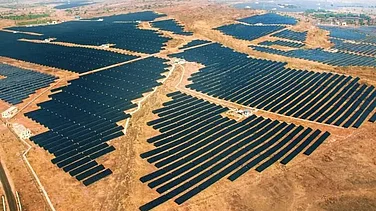Lack of incentives for farmers, financial institutions viewing climate-smart agriculture (CSA) financing as risky, and unclear guidelines are major obstacles to increasing CSA financing in India, according to a new report.
Released by Samunnati, a company that provides financial and support services to farmers and agricultural businesses in India, the report recommended that development banks like SIDBI and NABARD create special credit schemes, establish dedicated CSA funds, promote clear guidelines (taxonomy), pilot blended finance models, and raise green bond finance from international markets to support climate financing/CSA financing.
According to India's Third Biennial Update Report, agriculture is the second-largest contributor (14.5 percent) to the country's total greenhouse gas emissions.
Although agriculture is closely linked to poverty reduction and rural development, India has excluded this sector from its nationally determined contributions (NDCs) or national climate plans aimed at achieving the Paris climate goals, which include limiting global warming to well below 2 degrees Celsius, preferably to 1.5 degrees Celsius.
However, existing government policies in agriculture address both climate mitigation and adaptation goals.
Sammunati said that currently, global climate finance flows are limited, and there is a disproportionate distribution of climate finance among sectors.
The energy and transport sectors, the largest emitters, have attracted 44 percent of total private climate finance, while agriculture and industry, the next largest emitters, have received less than 4 percent of total climate financing, it said.
"The climate financing landscape in India also faces similar challenges, i.e., dearth of finance as well as disproportional climate finance flows into key sectors," Sammunati said.
The leading agri-enterprise emphasised that the lack of incentives for farmers to adopt CSA technologies, financial institutions seeing CSA financing as risky, and the absence of clear guidelines (CSA taxonomy), which increases the risk of greenwashing, are significant barriers to scaling up CSA financing in India.
Given the potential to reduce climate impact and the urgent need for adaptation in India’s agriculture sector, there is a clear need for targeted capital investment to make agricultural and food supply chains more climate-resilient, it said.
A key part of this transformation is creating strong incentives for farmers and entrepreneurs to adopt climate-friendly technologies and practices.
One effective strategy is to offer loans at lower interest rates compared to standard financing options, Samunnati added.
























.jpg?w=200&auto=format%2Ccompress&fit=max)





